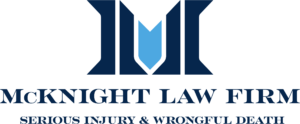Funding medical care after injury when you have no insurance
If you or a family member suffers injuries in an automobile wreck, truck collision, boating accident, or other unexpected incident, it doesn’t always happen at a time when you are able to afford the expensive medical care involved to bring you to a point of maximum medical improvement (MMI); and if the injuries are serious, the ongoing medical care over a period of time, or even one’s lifetime.
EMS and hospital emergency rooms are required by law to initially take care of injured people; but beyond that, it is the patient’s responsibility to fund the medical care, pending the outcome of claims against the individuals or corporations that caused your injuries through negligence.
The value of a personal injury case cannot ascertained until the person reaches MMI, the point that health care providers determine there is no additional treatment that will improve the medical condition(s) to any significant degree. But to get to that point of reaching MMI, it requires detailed medical care, therapies, medications, which cost money; and once MMI is reached in serious, permanent injury cases, it is appropriate to have a qualified physician perform a formal evaluation of permanent medical impairment(s) per the American Medical Association’s Guide to the Evaluation of Permanent Impairment (5th or 6th Edition); and further, where a person’s ability to work is diminished or eliminated, it is appropriate to have a formal vocational assessment to determine the extent of disability from work. Again, these things cost money on the front end; money the insurance company does not pay in advance of settlement.
Health insurance companies have contractual arrangements with health care providers which pays the providers a portion of charges, based on the terms of the insurance plan. When health insurance companies learn there is third-party liability, they typically write a letter imposing a lien on the settlement or final resolution after a trial. But their reimbursement is for a portion of their charges, as is the case with all insurance, including Medicare. So health care providers these days are happy to have an alternative that allows them to receive an amount that is closer to their actual charges.
Letters of Protection
One alternative to health insurance funding is a “letter of protection from the attorney, promising that the medical expenses will be paid at time of settlement, with the permission of the client. The problem with a straight up letter of protection, from the health care provider’s standpoint is that the client can instruct an attorney to revoke the letter of protection and not protect the interests of the provider; and the attorney must follow the client’s instructions. It can place the attorney in a bad position with the health care provider, having previously promised to pay, the not doing so due to a client’s last minute directive. This happens infrequently, but it can happen. And again, the health care provider must wait to get paid. If the case is lost at trial, the client still owes the money.
Written Contractual Liens
Another alternative is for the health care provider to have the client/patient sign a specific contractual lien, agreeing that the health care provider will not seek payment until the case resolves. Again, the health care provider must wait to get paid; and if the case is lost at trial, the client still owes the money.
Health Care Funding Companies
The emerging trend in funding medical care in personal injury cases where there is no insurance, is to use a medical care funding company, such as HMR Funding . The attorney goes through a brief “underwriting” application process, so that the funding company is able to assess the risks of funding the medical expenses for such things as orthopedic care, physical therapy, and diagnostic studies such as MRI scans.
In this situation, the funding company looks at the facts of the case, whether liability is accepted, and the amount of insurance coverage available. The funding company then pays the health care provider within 15 to 30 days of services being provided, at a rate that is less than the actual medical bill. The funding company then takes an assignment on the medical bill; and when the case is resolved, the funding company receives payment for the medical bill.








